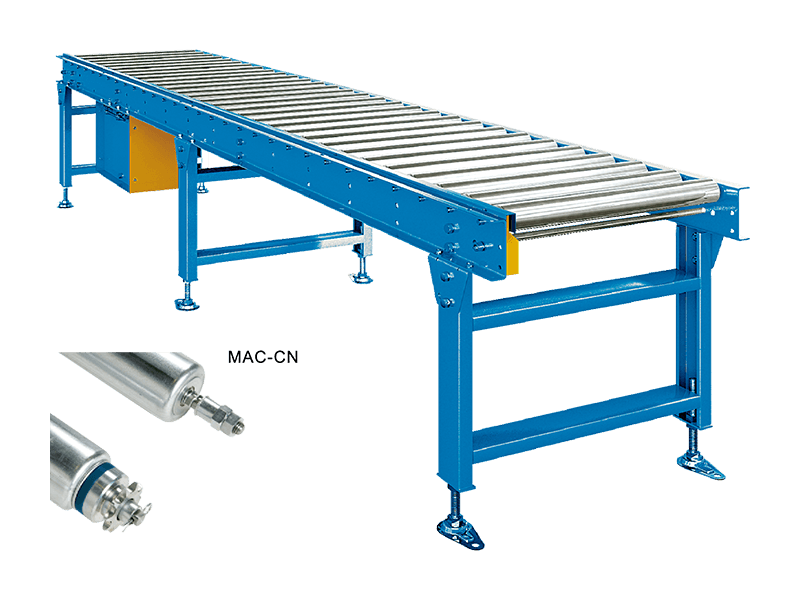In the intricate realm of industrial logistics and manufacturing, driven conveyors stand as indispensable instruments of precision and power. These mechanical marvels orchestrate the seamless movement of materials, bridging the gap between production stages with unmatched efficiency and reliability. As industries demand accelerated throughput and uncompromising accuracy, driven conveyors emerge not merely as transport mechanisms but as pivotal enablers of operational excellence.
At their core, driven conveyors are mechanized systems equipped with a power source—typically electric motors—that directly propel the conveyor belt or chain. This propulsion mechanism distinguishes them from their gravity-fed counterparts, affording superior control over speed, direction, and load management. This direct-drive feature enables industries to tailor conveyor operations to exact specifications, facilitating nuanced handling of materials ranging from delicate electronics to bulky industrial components.
The architecture of driven conveyors is a testament to engineering ingenuity. They typically comprise robust rollers or pulleys, precision-engineered belts or chains, and a motorized drive unit. The motor’s torque, transmitted via gearboxes or direct coupling, guarantees consistent motion regardless of load fluctuations. This stability is critical in maintaining product integrity and minimizing downtime, particularly in high-stakes environments such as automotive assembly lines, food processing plants, and pharmaceutical manufacturing.
Driven conveyors offer unparalleled versatility. They can be configured in various layouts—straight, curved, inclined, or declined—accommodating complex spatial constraints within facilities. Advanced designs incorporate variable frequency drives (VFDs), allowing dynamic modulation of conveyor speed to synchronize with upstream and downstream processes. This adaptability not only enhances throughput but also mitigates the risk of bottlenecks, ensuring a harmonious flow of materials through intricate production ecosystems.
One cannot overstate the role of driven conveyors in optimizing labor efficiency and safety. Automating the transfer of heavy or hazardous materials reduces manual handling, thereby diminishing workplace injuries and boosting workforce productivity. Moreover, these systems can integrate with sophisticated control technologies such as programmable logic controllers (PLCs) and sensor arrays. This integration enables real-time monitoring and automated adjustments, fostering predictive maintenance regimes that preempt failures and extend equipment lifespan.
In addition to operational benefits, driven conveyors contribute to sustainability objectives. By fine-tuning motor operations and incorporating energy-efficient components, they minimize power consumption without sacrificing performance. Innovations such as regenerative drives can even recapture energy during deceleration phases, channeling it back into the system and reducing overall environmental impact. For companies striving toward green manufacturing, driven conveyors present a compelling confluence of efficiency and eco-consciousness.

The selection of a driven conveyor system demands meticulous consideration of several parameters. Load characteristics—including weight, size, and fragility—inform the choice of belt materials and drive mechanisms. Environmental conditions such as temperature extremes, moisture, and exposure to corrosive substances necessitate specialized designs or protective coatings. Additionally, maintenance accessibility and modularity influence long-term operational costs and system scalability.
Looking ahead, the future of driven conveyors is poised for transformative evolution. The advent of Industry 4.0 technologies heralds intelligent conveyors equipped with artificial intelligence and machine learning capabilities. These smart systems will autonomously optimize routing, adjust speeds in real-time, and predict maintenance needs with unprecedented accuracy. Coupled with the proliferation of collaborative robots (cobots), driven conveyors will integrate into holistic automation frameworks that redefine industrial productivity paradigms.
Driven conveyors represent far more than mere conveyors. They are sophisticated, dynamic platforms engineered to propel modern industry toward new horizons of efficiency, safety, and sustainability. By marrying mechanical robustness with technological sophistication, these systems ensure that materials traverse production landscapes with precision and poise. For enterprises intent on maintaining competitive advantage, investing in advanced driven conveyor solutions is not merely prudent—it is imperative.







